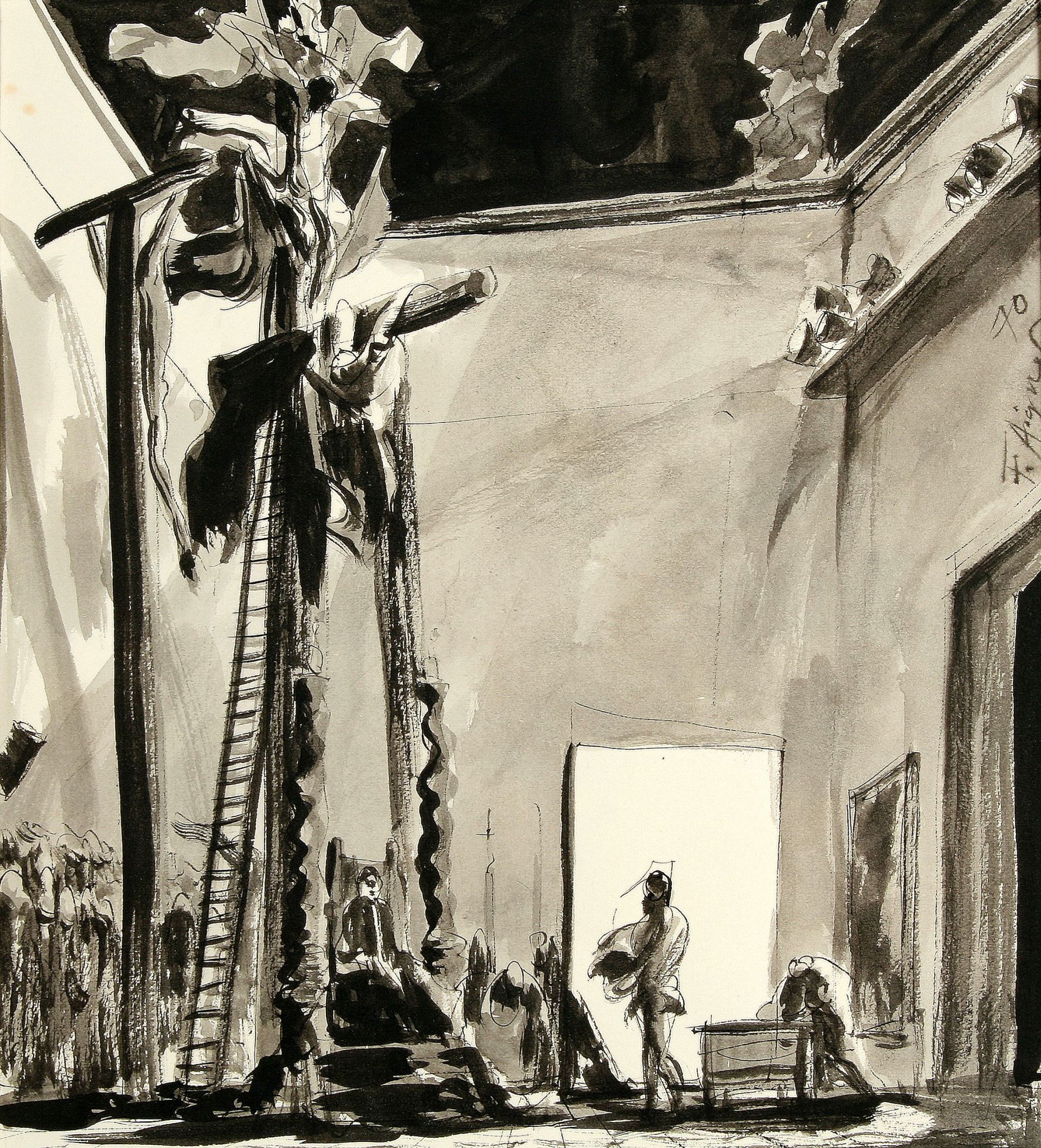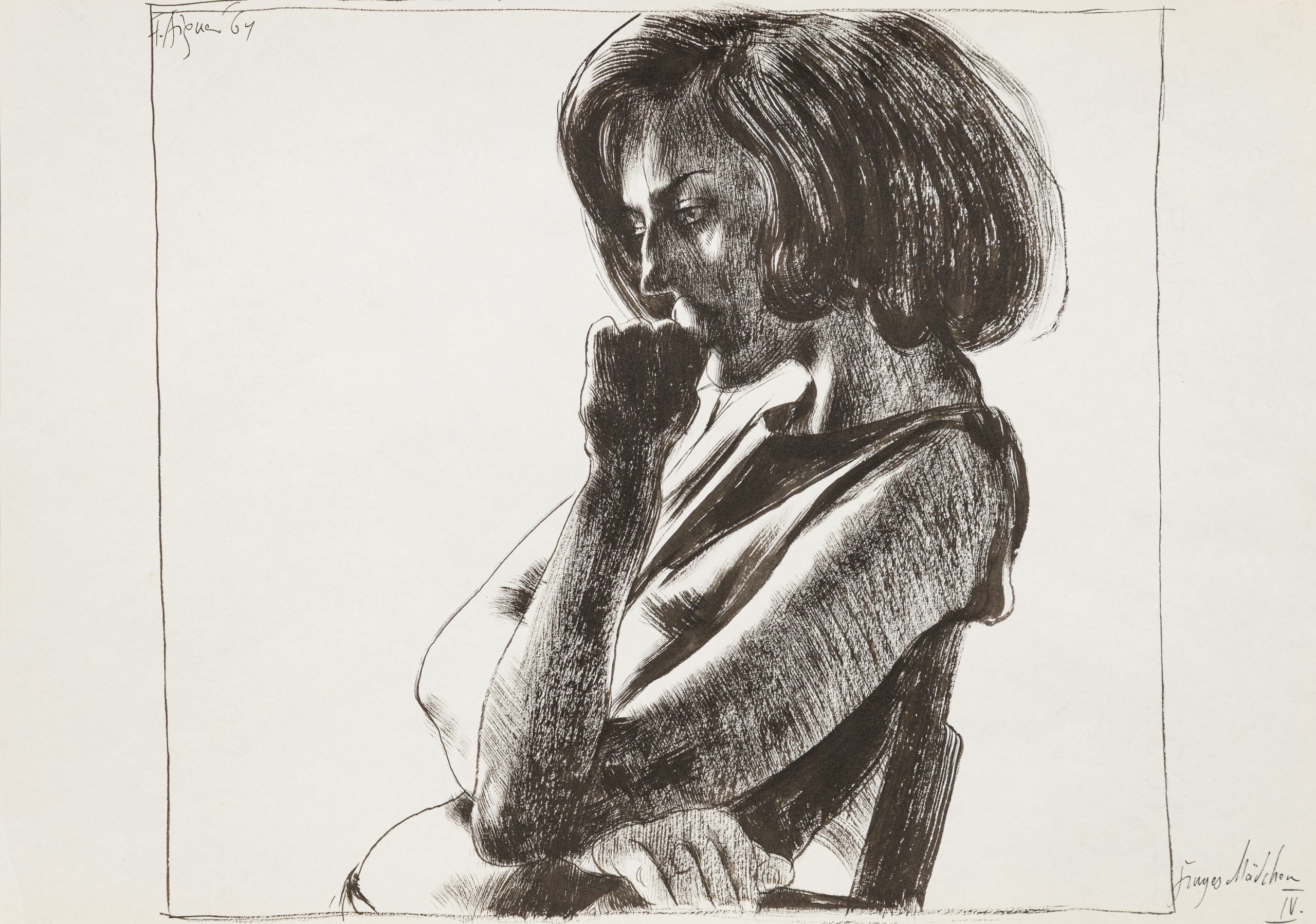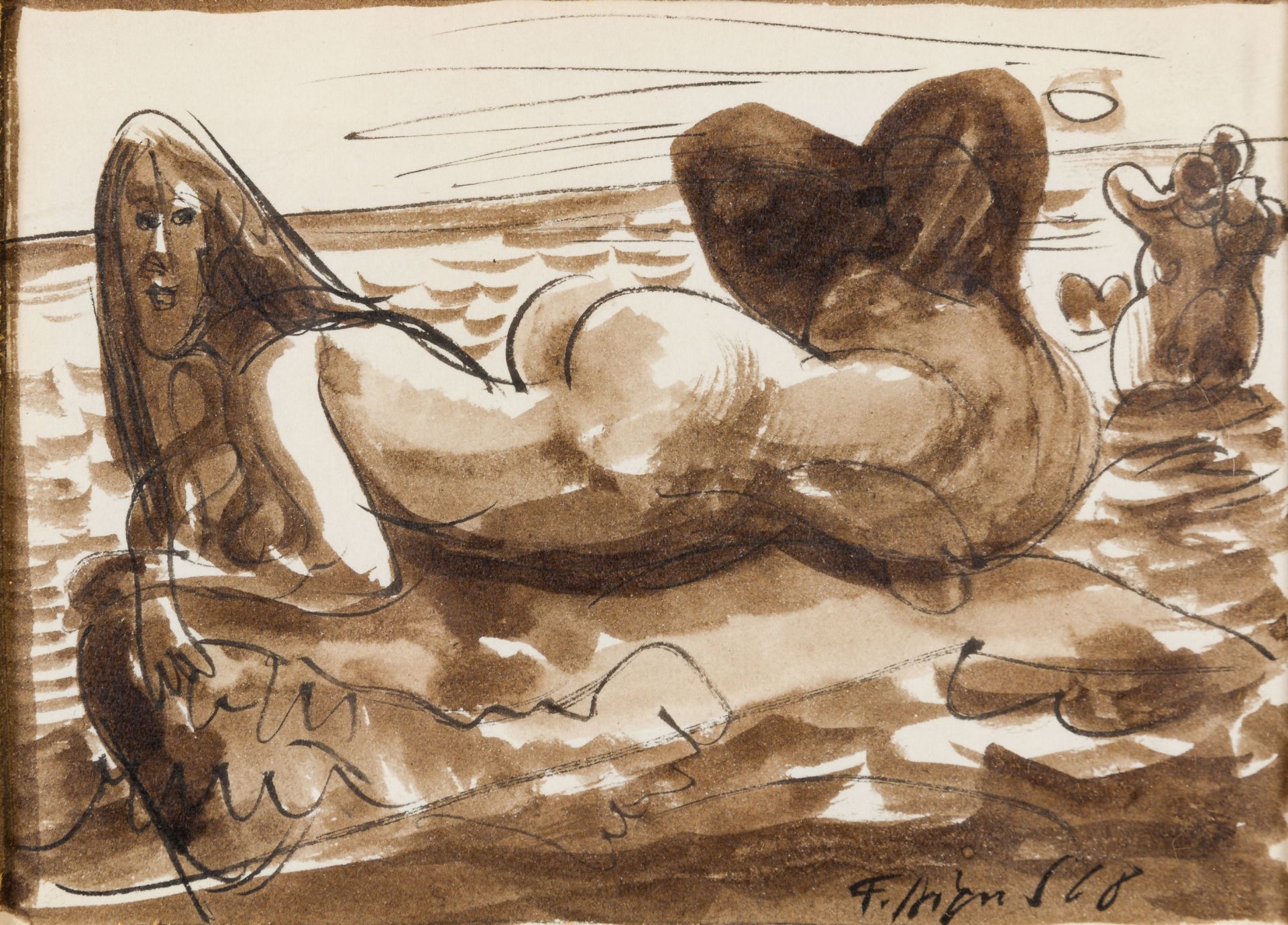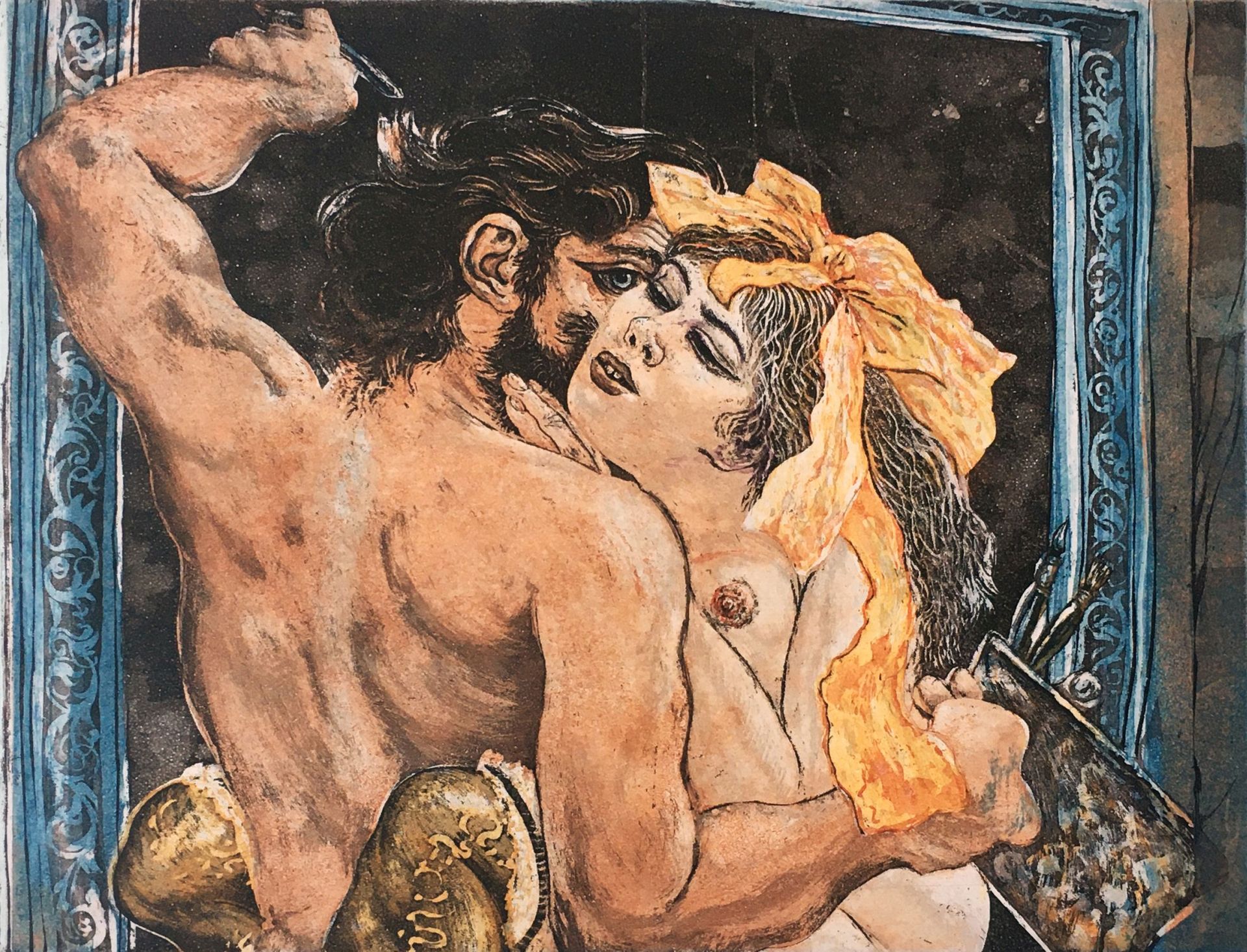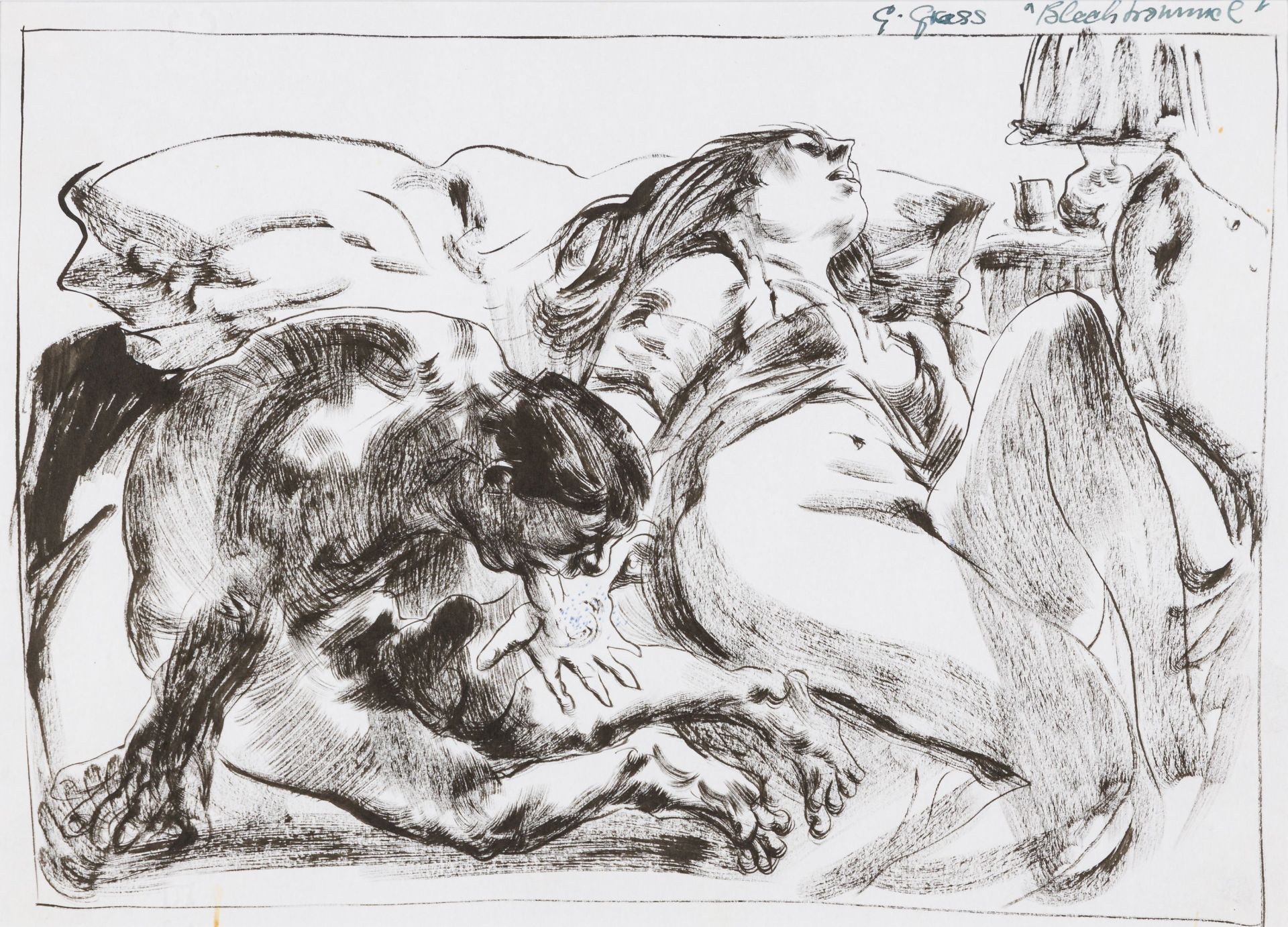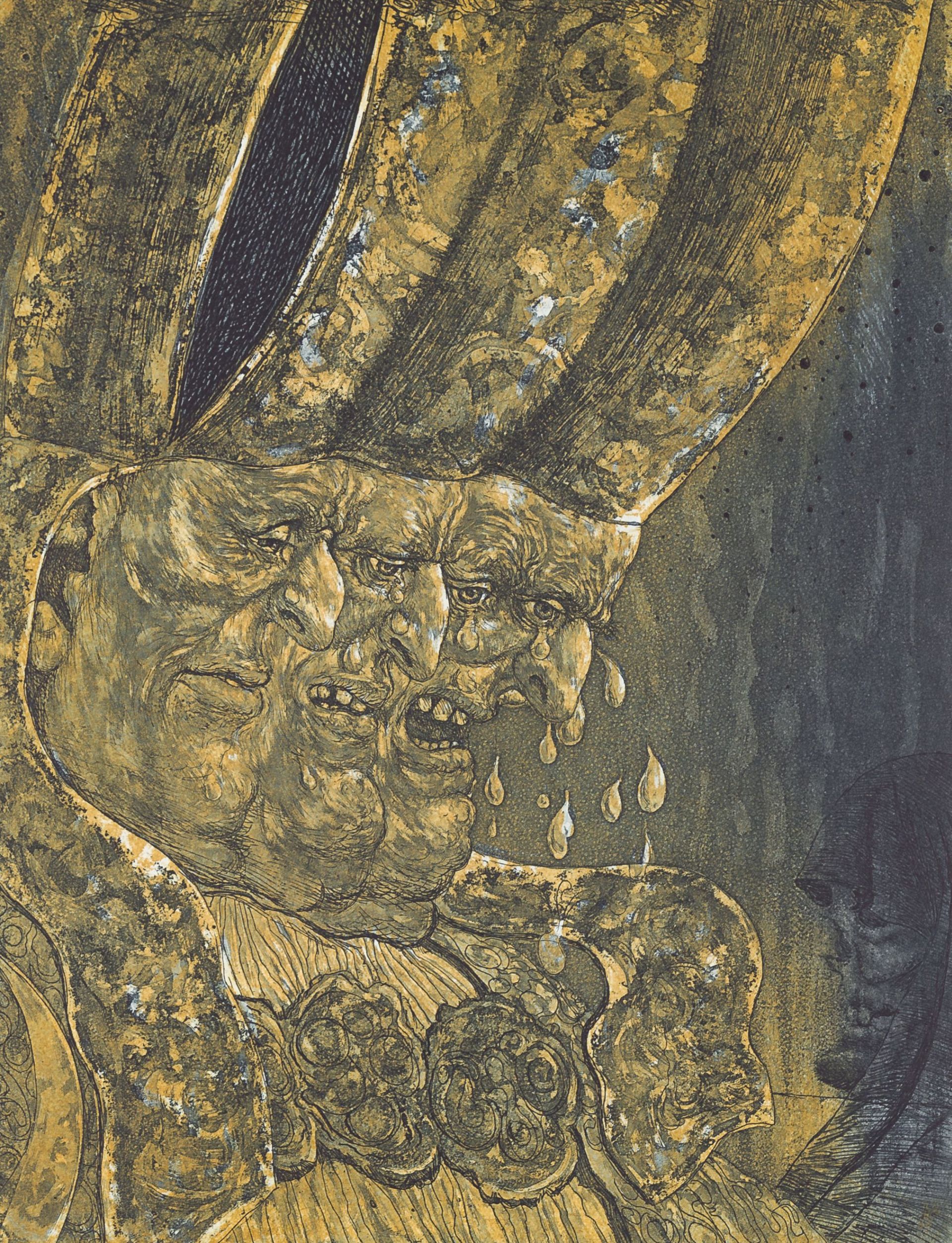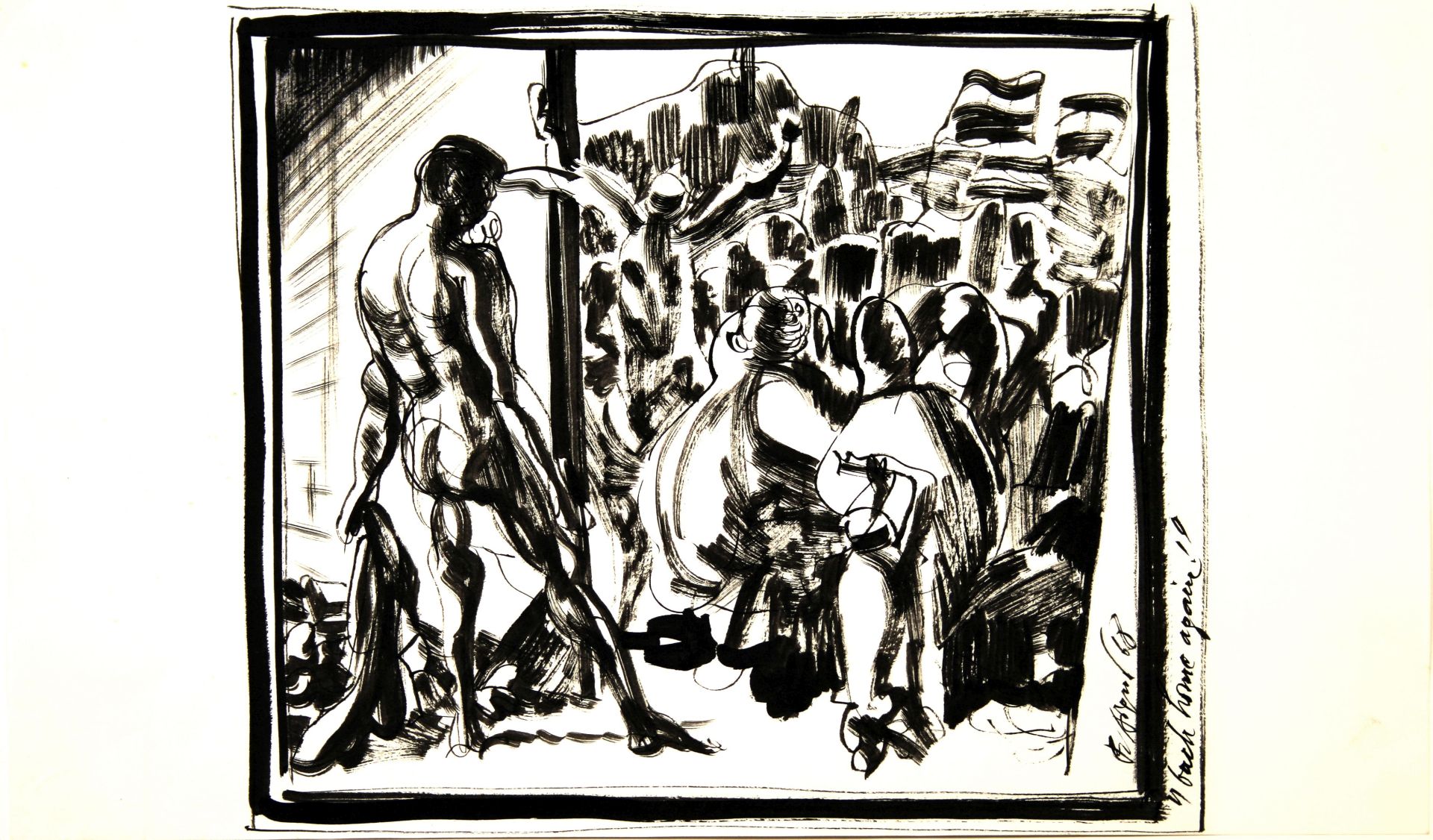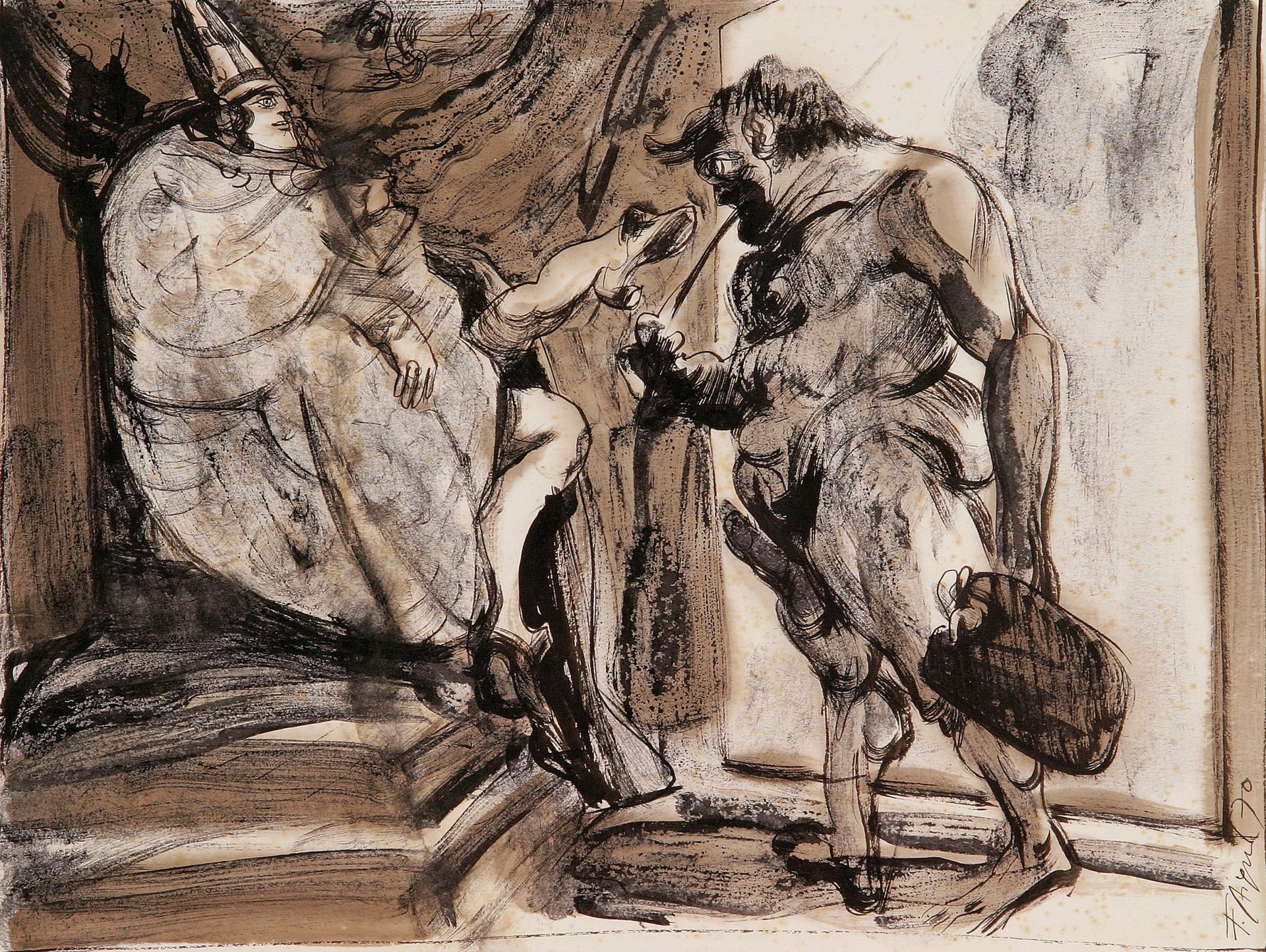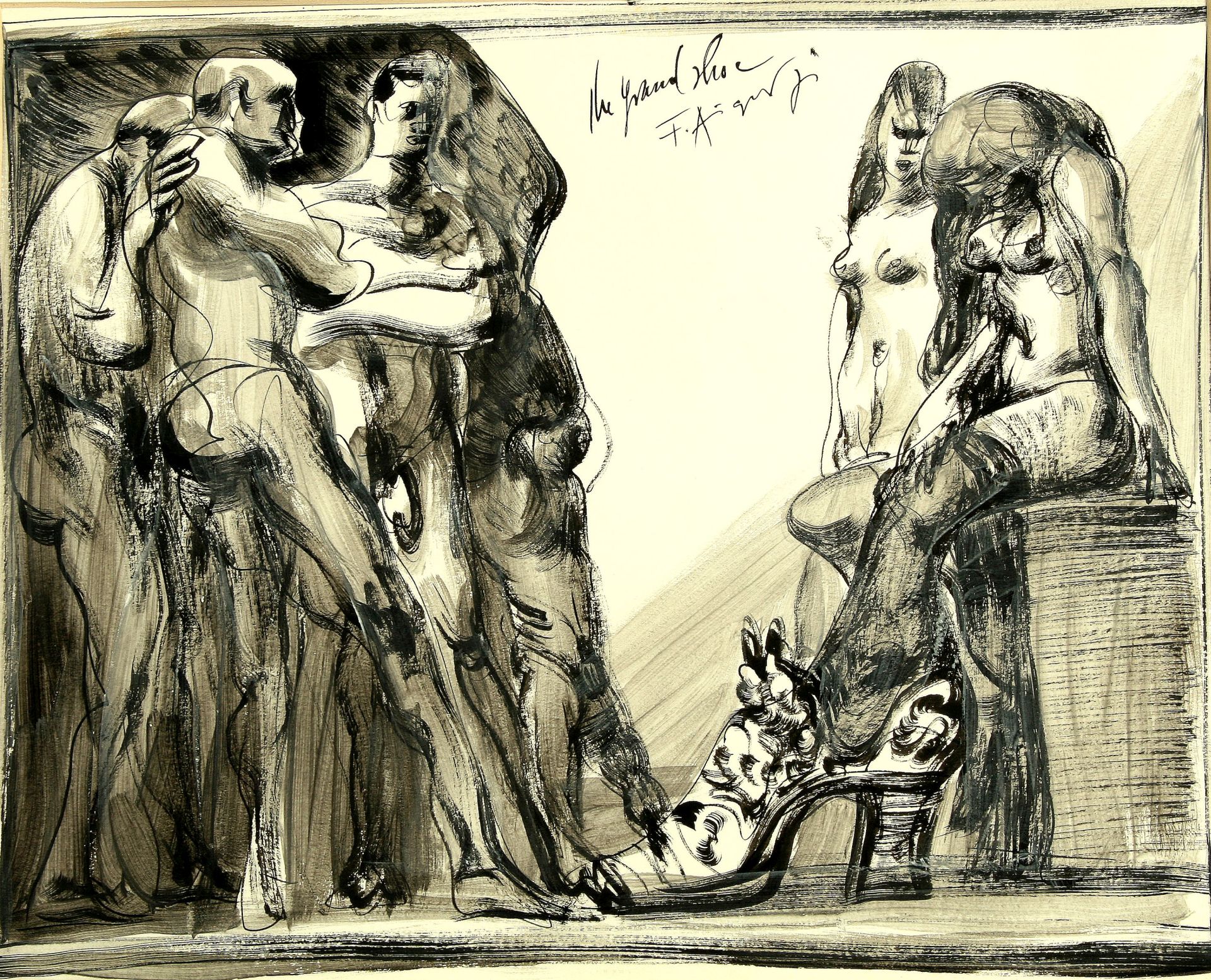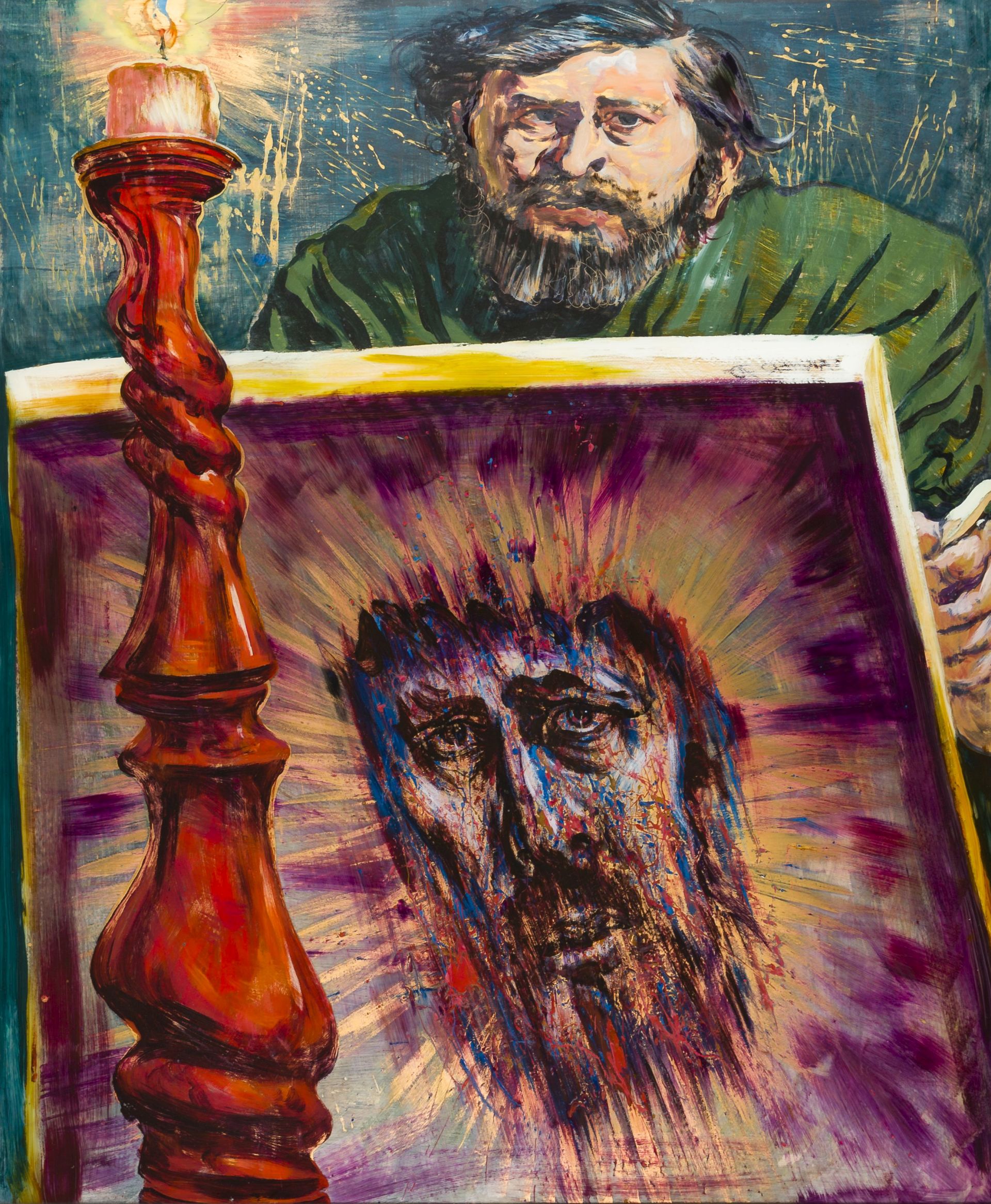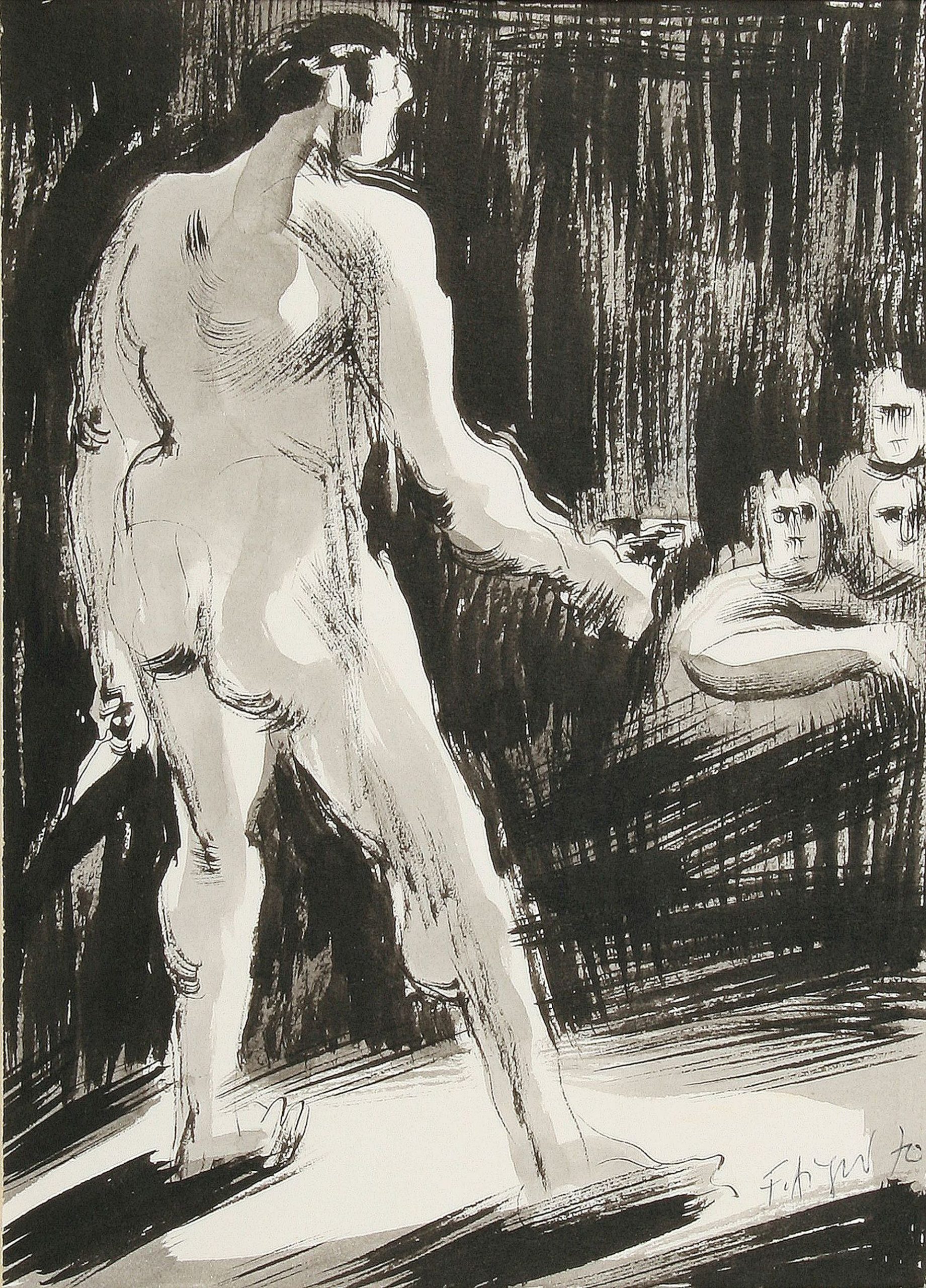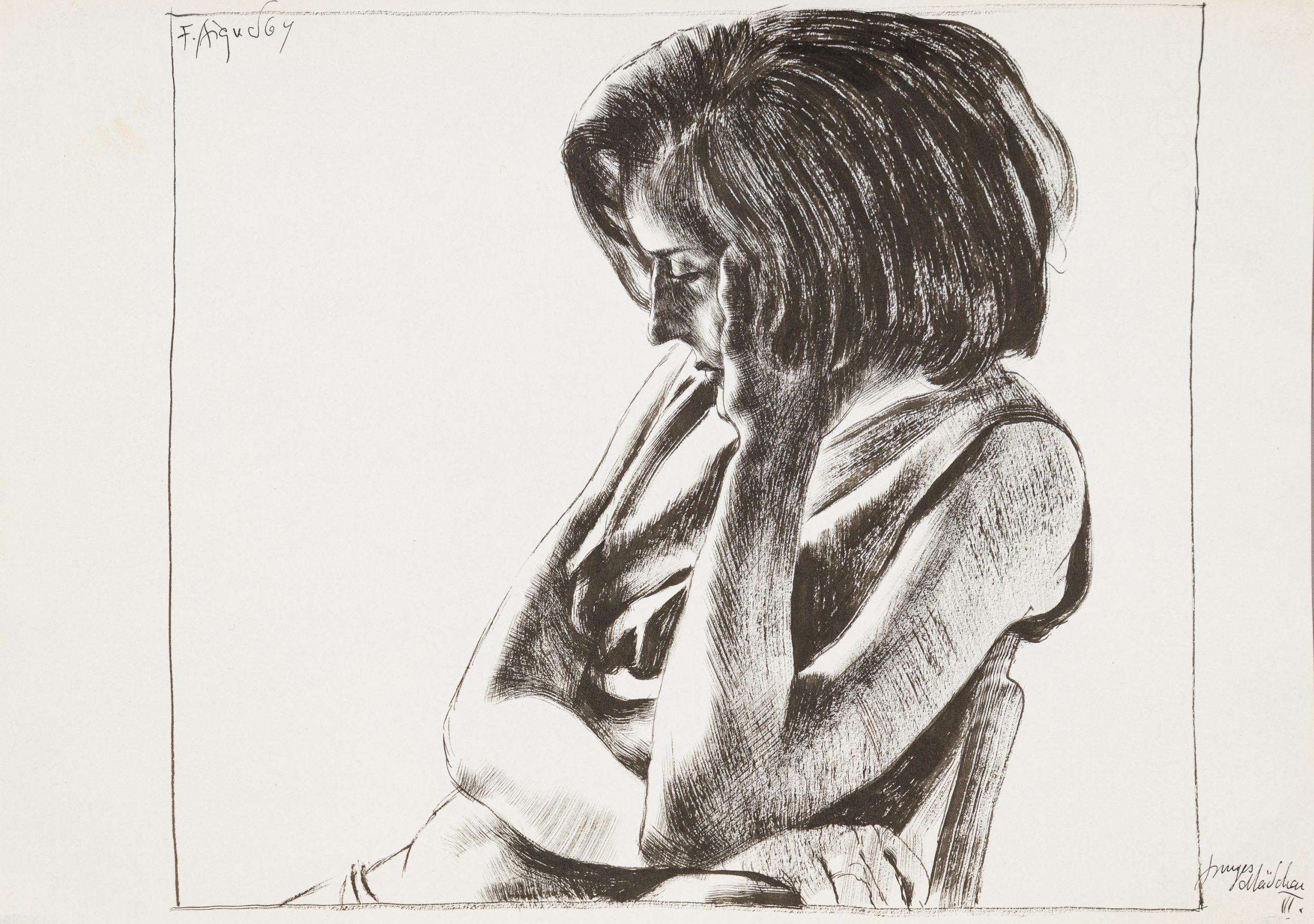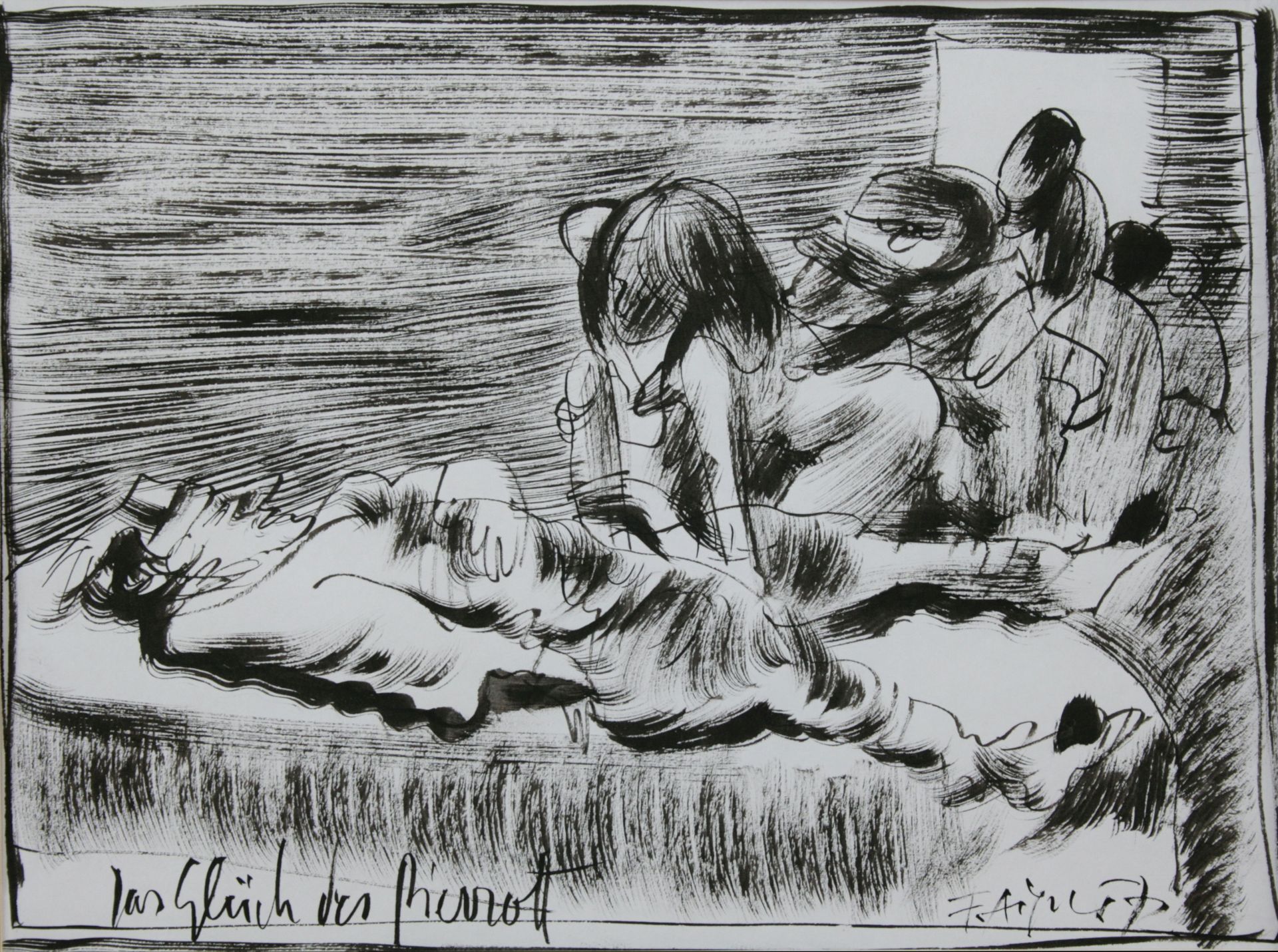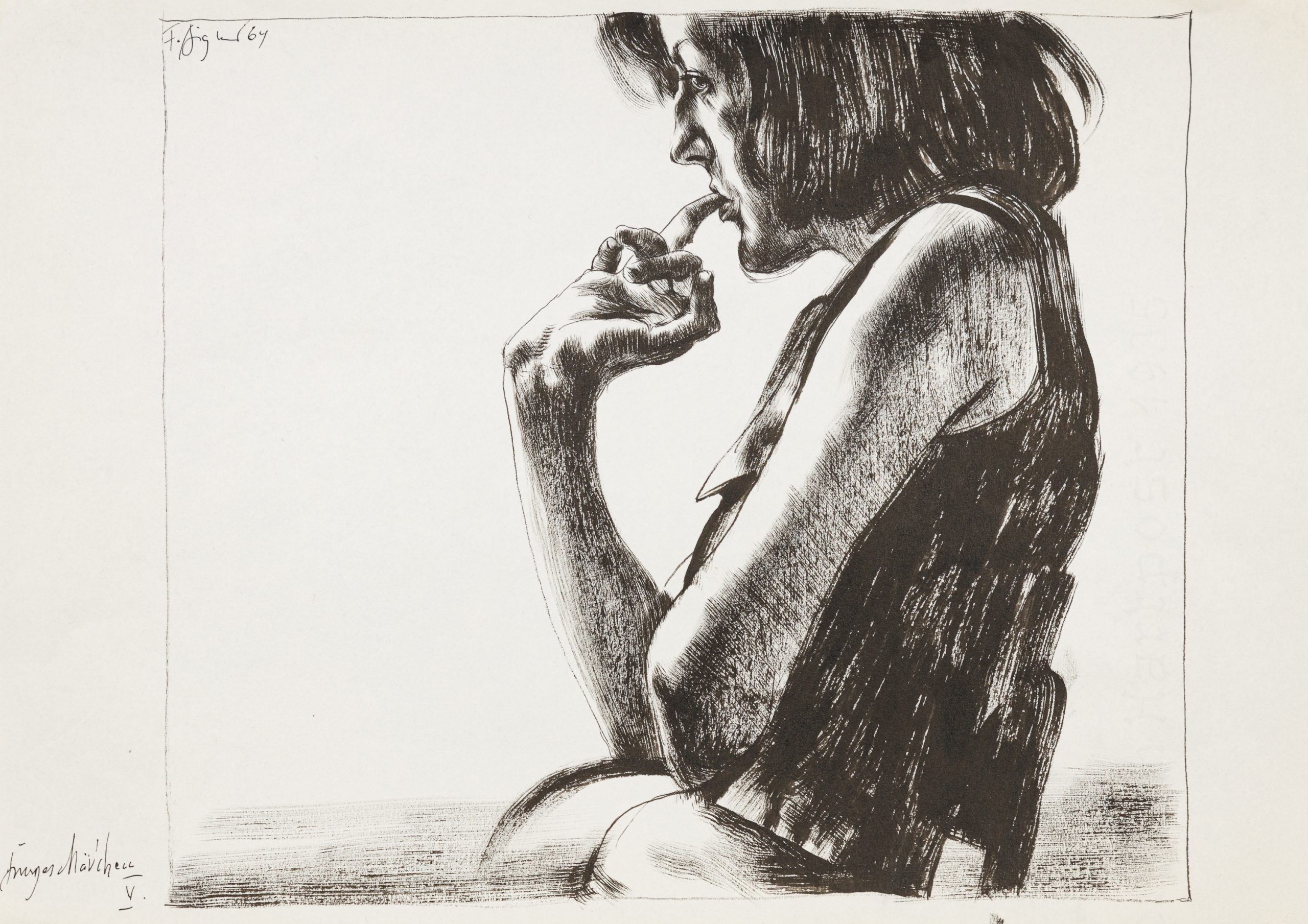(1930 – 2005)
Austria – Art after 1945 – Surrealism, Realism – Fritz Aigner
Vita:
Even as a schoolboy, his extraordinary talent is recognized and given the nimbus of a child prodigy. After evening courses with Paul Ikrath in Linz, he was admitted to the Academy of Fine Arts in Sergius Pauser’s master class at the age of 17 and finished his studies in 1952 with a diploma and state award from the Academy of Fine Arts.
Numerous study trips and stays of several months in Ireland, England and Spain.
In the sixties first exhibitions in Linz, from 1968 international exhibitions in England and Germany. With a television film on ZDF in 1980 under the title „Fritz Aigner – Rembrandt in Linz“ by Heinz Dieckmann, Fritz Aigner achieved international resonance overnight, but at an international level always remains a kind of insider tip that radically opposes the mainstream. In 1989 a monograph by Heinz Dieckmann was published, and in 2010 another by Hannes Etzelstorfer. 2008 Extensive personnel in the Nordico City Museum in Linz: “Fritz Aigner – child prodigy and painting machine”, 2015 personnel in the Künstlerhaus in Vienna.
Worg:
Throughout his life, Fritz Aigner showed himself to be a solitary figure in the Austrian art scene of the 20th century, who defied any association with art fashions and styles and unwaveringly formulated his own artistic path.
„You can just do too much“, Otto Dix tells Fritz Aigner, alluding to the enormous flood of motifs in Fritz Aigner’s work. Everything human, erotic and religious, everything perceptible, even the metaphysical, is a subject for Fritz Aigner and can be represented. The whole complexity of human existence is revealed in well thought-out picture compositions and with technical sophistication. The realism – often increased to the point of surreal – has a merciless effect and makes it impossible for the viewer to escape the relentless looks and looks. Whether reduced and spiritual or opulent and exuberant – Fritz Aigner’s pictures convince with an elementary power that is not always easy to endure.
Aigner’s masterful genius extends from oil painting in „old masterly mixed technique“ to wood and linocut to aquatint and color aquatint etching. His reverse glass painting occupies a special position in his artistic work. Here a traditional graphic has gained a new dimension. This applies not only to the formats, which make the sum of his painting technical experience visible in an inimitable way, between one and three square meters of picture surface, but above all to the implementation of an old master oil glaze mixing technique, which has been used in this form throughout art history in the Behind glass painting stands there without example. Requires respect and admiration from even the most technically and technically skilled artist colleagues and, for most of them, lies beyond what can be explained and understood. In addition, he has filed a convincing example of his unique skills in a barely manageable number of contoured and washed ink brush drawings. It is noticeable that he has achieved a degree of perfection in all the artistic techniques that he uses that puts him in line with the great artistic personalities of our time.
